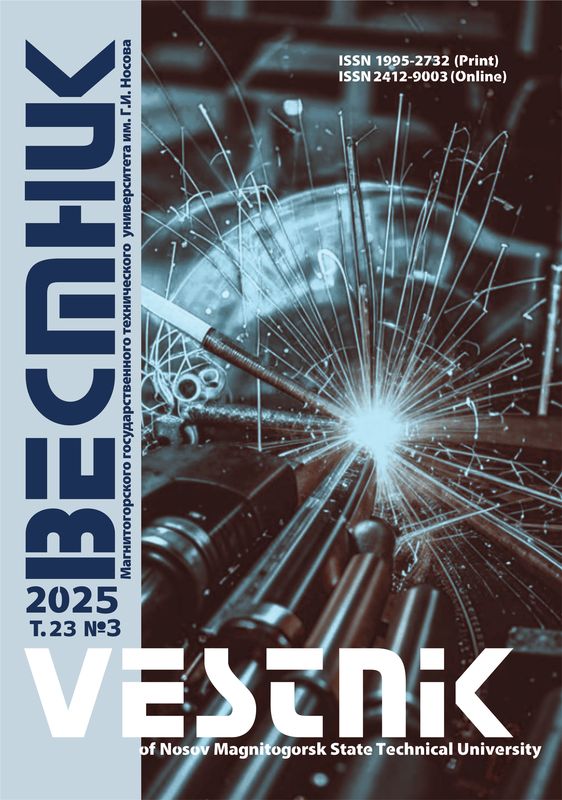Abstract
Problem Statement (Relevance): This paper examines the problem of quality in manufacturing, which is of relevance in the Russian Federation. It also substantiates why it is necessary to look into the causes identified of reduced reliability of domestic industrial products. Objectives: To understand the reasons for reverse application of Deming’s system of profound knowledge originally aimed at improving the quality of industrial products. Methods Applied: The provisions of Deming’s system of profound knowledge were applied. Geometric modelling of the system components was carried out using Venn diagrams, as well as methods and aspects of the knowledge and variability theories. To understand how production systems and products function, a method of assessing their state on the basis of the signal-to-noise criterion was implemented. Taguchi methods were used to analyse the quality of production systems. Originality: The authors looked at the causes for reverse application of Deming’s system of profound knowledge. They also proposed an approach to assessing the reliability of technical products using the Taguchi T-criterion. Findings: This paper examines the system of profound knowledge, its structure, components and their capabilities. It identifies the causes of reduced reliability of modern machinery, and examples are given of the cases when reliability was deliberately lowered. It is shown that even though the system proves to be an effective quality improvement tool, it can have reverse application. It is noted that the system of profound knowledge can be used to assess the products and their quality. Practical Relevance: As a result of interpretation of the signal-to-noise criterion, an approach is proposed to assessing the products, according to which not only the level of the design values but also the following characteristics should be considered: transition of the product parameters from being constant to being variable, increase or decrease in the total number of parameters used. Such approach will help prevent both under- or overestimation of the product quality.
Keywords
Reliability of equipment, system of profound knowledge, quality assessment, signal-to-noise.
1. Deming W.E. Vykhod iz krizisa [Out of the crisis]. Tver: Alba, 1994, 498 p. (In Russ.)
2. Haughey B. Linking Design Reviews with FMEA to Quickly Mitigate the Risk of Change ... Design Review Based on Failure Modes. Annual reliability and maintainability symposium (RAMS), Orlando, FL (2017).
3. Dil E.J., Ben Dhieb F., Ajji A. Modeling the effect of nanoplatelets orientation on gas permeability of polymer nanocomposites. Polymer. 2019, vol. 168, pp. 126–130. doi: 10.1016/j.polymer.2019.02.024.
4. Chen S.H., Ho Y.L. Lifespan of super-alloy Waspaloy cutting tools. Heliyon. 2019, vol. 5, no. 4. doi: 10.1016/j.heliyon.2019.e01388.
5. Lei Z.F., Su W.B. Research and Application of a Rolling Gap Prediction Model in Continuous Casting. Metals. 2019, vol. 9, no. 3. doi: 10.3390/met9030380.
6. Rajyalakshmi K., Nageswara Rao Boggarapu. Expected range of the output response for the optimum input parameters utilizing the modified Taguchi approach. Multidiscipline Modeling in Materials and Structures 15 (2): 508–522 (2019).
7. Protasiev V.B., Plakhotnikova E.V., Istotskiy V.V. A method for analyzing the status of production systems based on the “signal-noise” criterion in carbide burr manufacturing: An example of practical implementation. Vestnik Bryanskogo gosudarstvennogo tekhnicheskogo universiteta [Bulletin of Bryansk State Technical University], 2019, no. 1(74), pp. 15–19. (In Russ.)
8. Protasiev V.B., Plakhotnikova E.V., Litvinova I.V. Analysing the status of production systems based on the "signal-noise" criterion: A case study of the processes involved in the manufacture of products from bar stock. Chernye metally [Ferrous metals], 2018, no. 6, pp. 20–25. (In Russ.)
9. Nejadseyfi O., Geijselaers, H.J.M., van den Boogaard A.H. Evaluation and assessment of non-normal output during robust optimization. Structural and multidisciplinary optimization. 2019, vol. 59, no. 6, pp. 2063–2076. doi: 10.1007/s00158-018-2173-2.
10. Havinga J., van den Boogaard A.H., Klaseboer G. Sequential improvement for robust optimization using an uncertainty measure for radial basis functions. Structural and Multidisciplinary Optimization 55(4): 1345–1363 (2017).
11. PNST 144-2016. Primenenie statisticheskih metodov k novim tehnologiyam i processam izgotovleniya produkcii. Robastnie parametri produkcii [Applications of statistical and related methods to new technologies and product development processes. Robust parameters of products]. Introduced: 01.01.2017. Moscow: Standartinform, 2016. 42 p. (In Russ.)
12. Kolahan F., Moghaddam M. Azadi. The use of Taguchi method with grey relational analysis to optimize the EDM process parameters with multiple quality characteristics. Scientia Iranica 22 (2): 530–538 (2015).
13. Bolshaya sovetskaya entsiklopediya [Great Soviet Encyclopedia]. Vol. 18. 3rd ed. Ed. by A.M. Prokhorov. Moscow: Sovetskaya entsiklopediya, 1978, p. 201. (In Russ.)
14. Nosenkov A.A., Kovel A.A., Medvedev V.I. Some issues of theoretical and engineering support to ensure compatibility of modern technology. Vestnik Sibirskogo gosudarstvennogo aerokosmicheskogo universiteta im. akademika M.F. Reshetneva [Bulletin of the Reshetnev Siberian State Aerospace University], 2003, no. 4, pp. 130. (In Russ.)












